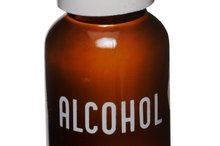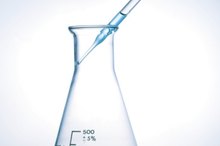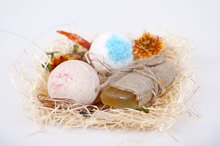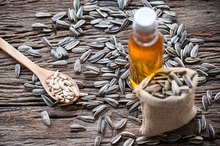Types of Glycerin
Glycerin is an organic alcohol with a sweet taste and slippery, viscous feel. Used in cosmetics, food, industry, medicine and pharmaceuticals, natural and synthetic glycerins are chemically identical. According to the 2008 Glycerin Market Analysis Report from the U.S. Soy Bean Export Council Inc., sales of natural glycerin have outpaced those of synthetic glycerin by 30 times. This is due to a glut of natural glycerin as a by-product of biodiesel, soap and fatty acid production.
Because glycerin is very hygroscopic, it is added to foods, especially baked goods like energy and protein bars, to preserve moistness. Its taste makes it a superb sweetener because it has a low glycemic index. Glycerin from vegetable oils and synthetic glycerin are kosher and halal. The viscosity of glycerin gives it an antibacterial property. In soaps and cosmetics glycerin serves as a lubricant and moisturizer.
Synthetic Glycerin
When petroleum is distilled, propylene comes off as a top fraction. Glycerin is made by adding chlorine to the molecule and then hydrolyzing the trichloropropane produced. Synthetic glycerin is used in exacting applications in biotechnology and pharmaceuticals because of its 99.7 percent purity. According to the Glycerin Market Analysis Report, prescription and over-the-counter drugs were initially formulated with synthetic glycerin and received FDA approval as such. To change to natural glycerin would entail new FDA approval processes.
Natural Glycerin from Soap Manufacture
Types & Uses of Alcohol
Learn More
Hydrolysis of animal or vegetable lipids with sodium hydroxide produces fatty acid soap and glycerin. Until recently, this process produced the highest volume of natural glycerin. Because of contamination with the parent compounds, the crude material is distilled at a refinery.
Natural Glycerin from Biodiesel
Recent interest in biodiesel fuel from renewable sources of vegetable oil, waste cooking oil and beef tallow has created a market glut of glycerin. Biodiesel is prepared by adding methanol to the oil/fat source. The fatty acid portion of the molecule is esterified to biodiesel, and glycerin is produced as a byproduct. Crude glycerin is distilled and purified to a possible 99.5 percent purity with ion exchange resins. Research today is focused on using lipids from algae or bacteria to produce biodiesel and glycerin.
Related Articles
References
Writer Bio
Susana Miller has been writing since 1970. She has been published in magazines and journals, including "Health and Wealth," "Cytometry," "Mutation Research" and "Toxicological Sciences." Miller holds a bachelor's degree in chemistry from the University of Florida, a master's degree in biochemistry and a Ph.D. in cell biology, both from Texas A&M.







